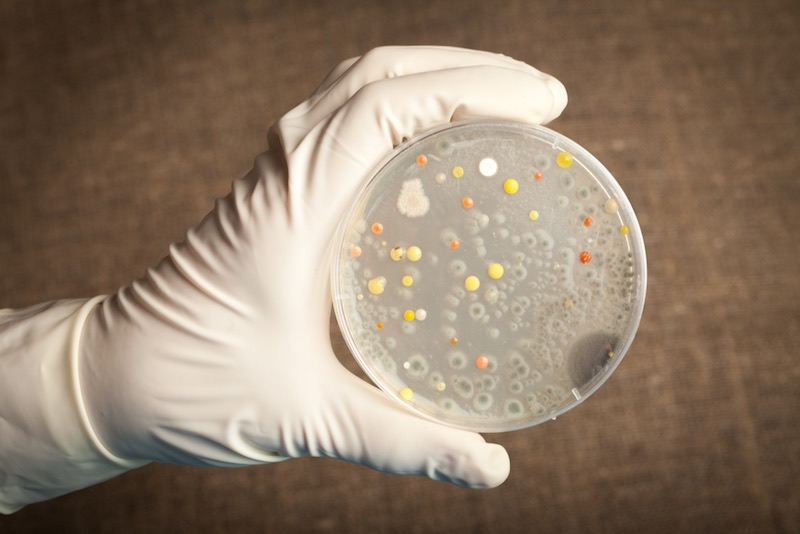Science lectures get a bad rap. There are experts who opine that teaching science facts in a classroom isn’t really teaching science.
This is just plain wrong. Whether students specialize in STEM or not, everyone needs to know the vocabulary of science. Everyone needs to know the importance of science in society and in our daily lives. Every student needs to be inspired by amazing facts that are outside of dull day-to-day existence.
But learning science with laboratory time is so much better.
From early childhood through the college years, hands-on experiences give learners an intuitive “feel” for scientific facts. A laboratory exercise like Modern Biology’s Experiment B1-1: Properties of DNA, which involves precipitating calf thymus DNA with an acid solution and manipulating strands of DNA with glass rods, seems, well, really simple.

But that’s the point. Some students will know all the vocabulary words about DNA and nucleotides and helical structure, but they won’t really have a “feel” for what DNA is.
After they do this experiment, they will have a kinesthetic memory of the concepts you teach them in lecture. And even an exercise as simple as this one helps students grow in a number of ways:
- Many students need practice in following If you don’t use the right reagents, at the right pH, in the specified amount, you don’t get DNA to precipitate out of aqueous solution. To get anywhere at all with this laboratory exercise, students have to follow instructions.
- All students need practice in scientific thinking. This is the point at which an experiment built around manipulating strands of DNA with glass rods is deceptively simple? Students need to be encouraged to think about different possible outcomes of this experiment. For instance, is it possible to make DNA soluble again? Are all the visible strands of DNA similar? Does pH or temperature or concentration or reaction time make a difference in the results? Then students need to (1) formulate their hypothesis, (2) test their hypothesis in the real world, and (3) record their results. In writing. Experiments require writing.
- And all students need experience weighing samples, mixing reagents, putting bottles back on the right shelf, and managing their time.
Even a very, very simple experiment is an important learning experience. These skills transfer to activities in just about every other aspect of life. But you don’t want to stay with the basics!
Modern Biology offers a progression of experiments that give your students an opportunity to “discover” the principles you teach in class. For example, Modern Biology’s IND-14: Enzyme Kinetics allows students to observe and measure acid phosphatase enzymes in wheat germ. They formulate their hypothesis about how the enzyme behaves, or what its concentration in wheat germ is. They test their hypothesis. They report their results, even if they don’t get the results that they expected. In doing the experiment, students practice basic laboratory skills like using a pipette.
This experiment is also a gentle reminder that biology also requires math. Students doing IND-14 will analyze their data with Lineweaver-Burke and Michaelis-Minton plots to calculate Km and Vmax.
Training your students in the functions of albumin as a carrier of small molecules of biological significance and in the fundamentals of ELISA (enzyme-linked immunosorbent assay) to study antibody-antigen reactions prepares them for future study in laboratory medicine. Students can learn the Western blot procedure.
Understanding and mastering laboratory electrophoresis opens the door for students to explore IND-07: Amplification of a Hemoglobin Gene by PCR, and IND-10: PCR Amplification of a Gene for Ribosomal RNA, and IND-29: Electrophoretic and Chromatographic Analysis of Photosynthetic Pigments from Blue-Green Algae. But you can also use Modern Biology to reinforce the basic concepts of zoology, vertebrate histology, and immunochemistry.
Plus, you can use Modern Biology as a source of experiments that are fun to do, like creating a biological computer to solve the pancake problem and genetically engineering a strain of E. coli to glow in the dark.
Experiments from Modern Biology make students think. There is no exemption from remembering facts, but learning facts is easier when they are presented in tangible ways. Experiments from Modern Biology encourage high school and college learners to ask falsifiable questions, look for answers, and conduct investigations to see if their initial understanding is correct. The facts that students learn from textbooks come to life, sometimes literally, in the lab.
Modern Biology makes teaching biology lab easy. Everything you need for each laboratory experiment is included in a single box. You don’t have to fill out separate orders for experimental and control samples, reference samples, reagents, or expendable lab ware related to that particular exercise.
Ordering everything you need for a lab from Modern Biology is less of a strain on your budget than ordering every item separately. There are no forms to fill out to get the things you need from inventory (other than Modern Biology kit itself), and you don’t have to worry about safety certifications. Everything Modern Biology sells is non-toxic and safe for classroom use.











